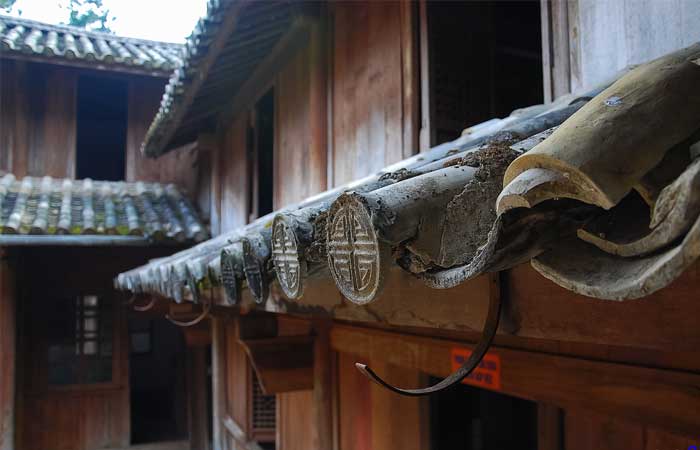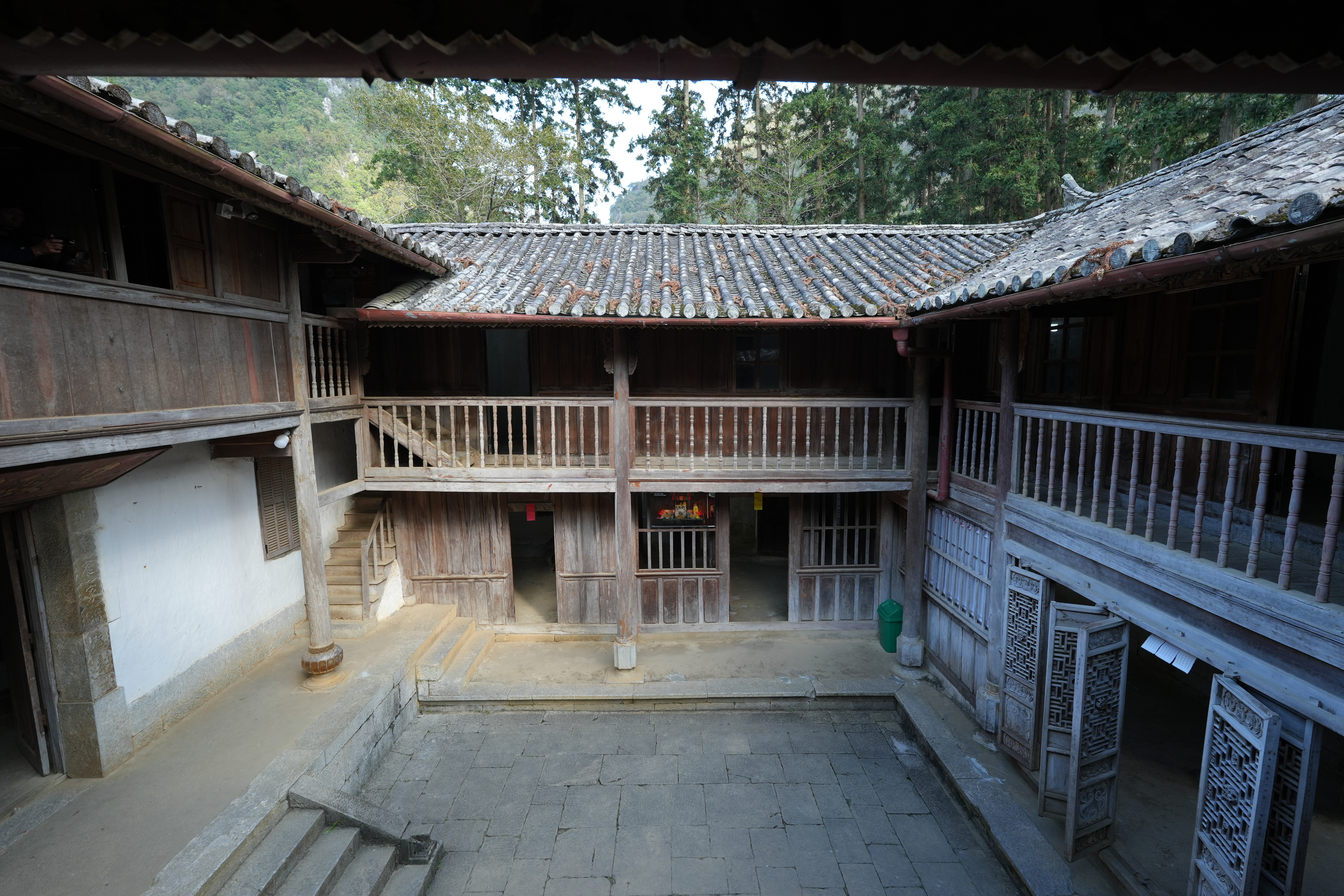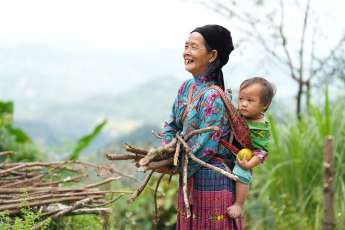%20(1).jpg)
Discover the Hmong King Palace in Ha Giang
- on Jan 4, 2020 By: Ngoc Nguyen
Nestled in the lush valleys of Sa Phin, the Hmong King Palace, also called Vuong Palace, symbolizes the rich cultural and historical legacy of Ha Giang. Hidden among towering mountains, this ancestral home narrates the story of a once-powerful royal family that ruled these remote northern Vietnamese lands. Its distinctive architecture, unmatched in the region, has endured through time, making it a must-see destination in Ha Giang.
A Historical Treasure
The Vuong Palace, which has nearly 100 years of history, embodies the rich heritage of the region. Built on a plot of land shaped like a turtle shell, the residence of the Vuong family is notable for its impressive architecture, characterized by massive walls and intricately carved battlements. This private residence, unique for its time, was home to two Hmong rulers, whose reign lasted until Vietnam's independence in 1945.
The first ruler was Vuong Chinh Duc (1886-1962), who aligned with the French colonial power and was revered by the Hmong people of the area as their sovereign. His son, Vuong Chi Sinh (or Vuong Chi Thanh), was the second ruler. He supported Ho Chi Minh's struggle for independence and was elected to the Vietnam National Assembly for its first two terms. While the descendants of this family still exist, the palace remains uninhabited.
An architectural masterpiece
This grand residence is distinguished by thick walls carved with battlements all around the exterior and solid stone and precious wood used as materials inside. Its construction alone took almost nine years, from 1898 to 1907, involving the careful study of a Chinese geomancer and the labor of many talented craftsmen, both local and Chinese.
Constructed on an area of about 3000 m², the 1200 m² residence of the Vuong family comprises 64 rooms, including 10 two-story buildings and 3 courtyards, divided into three vast sections, each with its own special significance. The first section, housing the servants' and guards' quarters, is lined with majestic trees from China, symbols of protection for the ruling family. The second, central and supreme, was the workplace of the king and his descendants, as well as the sanctuary dedicated to the family's ancestors. Finally, the last section, more intimate, was the home of successive generations of the Vuong family.
The wooden palace is constructed following the principles of feng shui, which highlights how the environment can impact one’s well-being. The architecture draws significant inspiration from Chinese culture, yet it also prominently features the distinctive ornamental motifs of the Hmong people, showcasing a blend of influences.


The outer stone wall serves as added protection against potential attackers.
%20(1).jpg)
Have a virtual visit to the Hmong King Palace with Authentik Vietnam
A journey through time
Walking through the dim and mysterious corridors of the Vuong Family Palace is like stepping back in time to a bygone era when hereditary nobility ruled over these isolated lands in northern Vietnam.
The roofs are covered with yin-yang tiles, which constitute a skylight, creating an atmosphere that is both refreshing and respectful of geomancy. The wood and stone carvings that adorn every corner of this architectural masterpiece tell stories of aspirations for prosperity and longevity through symbolic motifs such as dragons, phoenixes, and bats. In the middle of the dark and mossy walls, one will have the impression of being lost in the mystery of a distant legend that the populations of Ha Giang never cease to weave with their imagination.
Over the years, the Hmong King Palace has stood the test of time, bearing witness to a period when hereditary nobility ruled the land of the ethnic minorities of Ha Giang. This palace was recognized as a National Relic in 1993, and the descendants of the Vuong family voluntarily transferred its management to the Vietnamese government in 2004.
.jpg)
Location: Sa Phin Commune, 15 km from the center of Dong Van to the west, 130 km from Ha Giang City to the northeast.
How to get to the Hmong King Palace?
The Vuong Family Palace, located in the commune of Sa Phin, can be reached from Ha Giang City by taking the Hanh Phuc Road (Happiness Road) from National Highway 4C towards Dong Van. From Dong Van, there are two possible routes: either via Thai Phin Tung, and the palace is 15 km away (this route also leads to Sa Phin Market), or by continuing on Hanh Phuc Road to the site, located approximately 22 km from the city.
You can either visit the Hmong while on a Ha Giang Loop or get there by yourself by:
Motorbike: This is only recommended for licensed riders with experience, as the route can be hazardous for those who are inexperienced.
Ride on the back of a motorbike: Still adventurous, but safer.
Private car with a driver: This is the most comfortable way, though the price is higher than that of the above-mentioned options.
You would also like to read:
>> The mountain markets in Ha Giang, colours of the karst mountains
 Español
Español Français
Français
























Morgane Ter Cock
on Dec 18, 2025HerbertPhomaMS
on Oct 19, 2025Lilyan Cuttler
on Oct 15, 2025Avenue17XC
on Sep 14, 2025Avenue18JL
on Jul 21, 2025